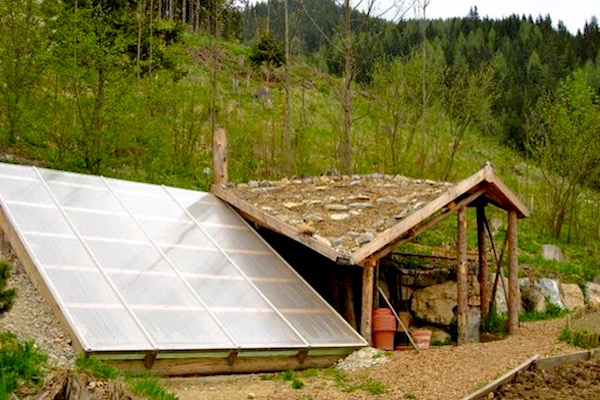This $300 DIY underground greenhouse is ideal for gardening in colder climates by collecting the sun’s rays and earth’s heat to grow food year round. From vertical farms to solar-powered “farms from a box,” we’ve seen how farming technology has grown leaps and bounds in recent years. But for those who prefer something a little more rustic, growing food from a hole in the ground is as low-tech as you can get. A walipini, meaning “place of warmth” from the Amaraya Indian language, is an underground greenhouse with a transparent (usually plastic) covering that stays warm by passively soaking up the sun’s heat and absorbing the earth’s thermal energy. Fruits and vegetables can be grown year-round, making it ideal for communities in colder locations that can’t usually grow their own fresh and local produce during certain parts of the year. The farming method isn’t exactly new. Walipinis have been used in South and Central America for decades, including one that can grow bananas at 14,000 feet in the Andes. The technique was notably adopted by The Benson Institute, a worldwide food security program of the Mormon church. According to The Plaid Zebra, the Benson Institute and its team of volunteers built a community-sized 74-feet-by-20-feet walipini […]
Continue reading... →I imagine that most people are familiar with the phrase, “It takes a village to raise a child”. While this rings true for children and families, I find that this can apply to many things. In fact, the community or village around that child or idea betters almost everything as it tries to grow and plant its roots.
At the moment, I believe this philosophy can be applied to making a change for our environment and helping our environment to continue to grow, as it should. While a lot of positive changes and growth begin in the home, much like with children, you cannot underestimate nor deny the positive influence provided by the village.
There are many ways that you can encourage your community to come together to help the environment. While we don’t exist in the same way as a community or village that we used to, it can still be a great way to educate and spread the word about some of the issues going on in the environment today.
Continue reading... →I live in an idyllic valley just 45 minutes drive north of Auckland, the largest city in New Zealand. These six acres I call home has been my turangawaewae or standing place for 25 years. The first time I walked the land, I knew I belonged here. It was mostly pasture with a scraggly bit of remnant native forest that sheltered the sheep and cattle that grazed here. North facing, it is surrounded by huge hills covered with native trees. My then husband and I had no doubts. We rang the agent and put in a bid. From a piece of bare land it has grown to be a tree covered oasis, a place of healing and a haven for people, birds and insects.
Continue reading... →
